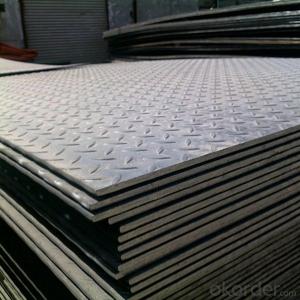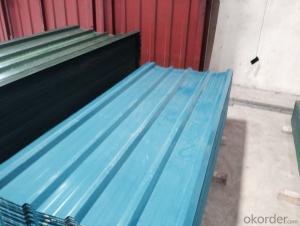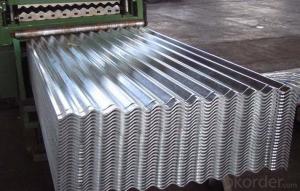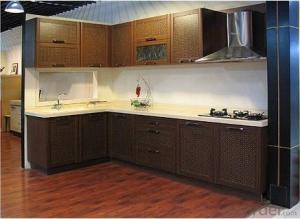Hot Rolled Steel Plate Mild Steel Chequered Plate
- Loading Port:
- China main port
- Payment Terms:
- TT OR LC
- Min Order Qty:
- 23 m.t.
- Supply Capability:
- 10000 m.t./month
OKorder Service Pledge
OKorder Financial Service
You Might Also Like
Item specifice
Hot rolled steel plate mild steel chequered plate
Our main procucts are steel billet,steel plate,steel roll coil,steel wire rod,steel bar,etc.Moreover,our hot rolled coil and ship building plate are certificated respectively by CARES,CE from Eurpoean Union and CCS authentication from nine nations.Our products are widely used in variety areas,such as millitary,aerospace,transportation,equipment manufacturing,shipping,petroleum pipe line,buildings,etc.
Product Description
| Item Name | Boiler steel plate(pressure vessel steel plate) | |||||||
| Standard | ASTM515/516,EN10028-2,GB713,GB3531 | |||||||
| Certification | ISO9001 | |||||||
| Dimension | Thickness:6mm-50mm,as customer's requirement | |||||||
| Width:1700mm-3200mm,as customer's requirement | ||||||||
| Length:3000mm-13000mm,as customer's requirement | ||||||||
| Surface | Clean,blasting and painting according to customer requirement | |||||||
| Application | It is widely used in Container,Boiler,Construction,etc | |||||||
Product Picture
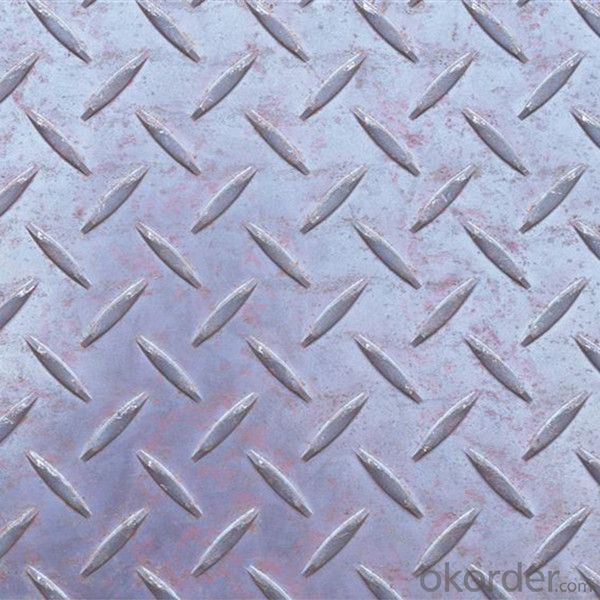
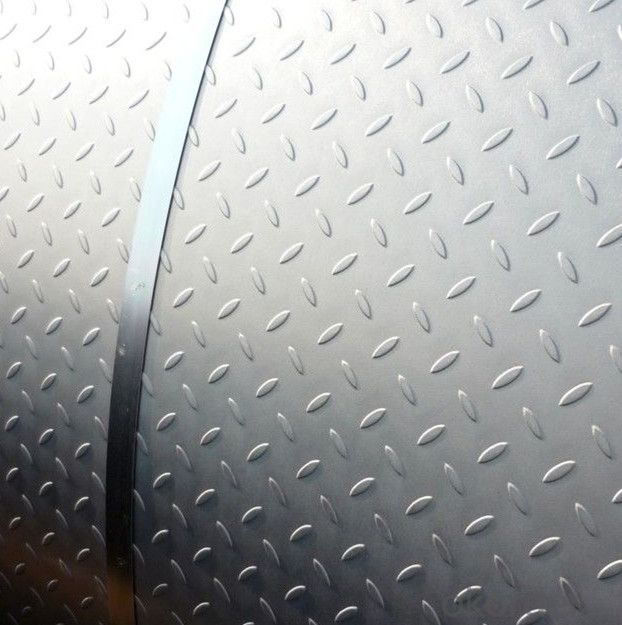



FAQ
1.Q:You are Factory or Trading Company?
A:We are factory,our main products include Steel plate,Steel Bar,Steel coils.
2.Q:What’s the MOQ?
A:Generally,the trail order will be accepted.The MOQ can be confirmed according to the different products.For example,the MOQ of rebar will be 25-50MT,the galvanized steel pipe will be 10MT,the stainless steel pipe will 1-5MT.
3.Q:Do you have OEM service?
A: Yes.Variety of products size,quality and quantity can be customized according to your need.
4.Q:Could you support free sample?
A:Yes.We can supply FREE samples.But the delivery charges will be covered by our customers.
5.Q:How about the delivery time?
A:Within 15-30days after receiving the deposit or L/C at sight.
6.Q:How about the trade terms?
A:EXW,FOB,CFR,CIF will be accepted.
7.Q:How about your payment terms?
A:30%TT in advance and the balance against of copy of B/L.
The irrevocable L/C at sight will be accepted.
- Q:What are the different profile options available for steel sheets?
- There are several different profile options available for steel sheets, each serving different purposes and offering unique benefits. Some of the most common profile options include: 1. Plain Sheet: This is the simplest and most basic profile option, with a flat surface and no additional features. It is commonly used for general purposes where aesthetics are not a priority. 2. Corrugated Sheet: Corrugated steel sheets have a series of parallel ridges and grooves, creating a wavy pattern. This profile provides extra strength and rigidity, making it ideal for roofing, cladding, and fencing applications. The ridges also enhance water shedding, preventing water accumulation on the surface. 3. Ribbed Sheet: Ribbed steel sheets have a series of raised parallel ridges or ribs running along the length of the sheet. This profile offers improved strength and load-bearing capacity, making it suitable for applications that require structural integrity, such as mezzanine floors, decking, and industrial flooring. 4. Perforated Sheet: Perforated steel sheets have a pattern of holes punched into them, allowing for ventilation, light transmission, and drainage. This profile is commonly used in architectural designs, façades, acoustics, and filtration systems. 5. Tread Plate: Tread plates have a raised pattern of lines or diamonds embossed on the surface. This profile provides extra grip and slip resistance, making it ideal for industrial flooring, stairs, ramps, and walkways. 6. Expanded Metal: Expanded metal sheets are created by cutting and stretching a flat sheet, resulting in a pattern of diamond-shaped openings. This profile offers excellent ventilation, visibility, and security, making it suitable for applications such as grilles, screens, fences, and enclosures. 7. Lipped Sheet: Lipped steel sheets have an edge or lip bent at a 90-degree angle along one or more sides. This profile provides added strength and stiffness, making it commonly used for framing, shelving, and edge protection. These are just a few examples of the different profile options available for steel sheets. The choice of profile depends on the specific requirements of the application, such as strength, durability, aesthetics, and functionality.
- Q:What is the typical cost of steel sheets compared to aluminum?
- Compared to aluminum, steel sheets generally have a lower typical cost. Steel, known for its strength, durability, and affordability, is widely used in construction and manufacturing. Steel sheets are easily obtained in various grades and thicknesses, making them more economically advantageous. Conversely, aluminum, a lightweight and corrosion-resistant metal, is highly sought after in industries like aerospace and automotive. However, the production and processing of aluminum are more expensive than steel, resulting in higher costs for aluminum sheets. Ultimately, the price disparity between steel and aluminum sheets hinges on factors such as market demand, current metal prices, and specific project or application requirements.
- Q:How do steel sheets perform in earthquake-prone areas?
- Steel sheets perform well in earthquake-prone areas due to their high strength and flexibility. They are capable of absorbing and redistributing seismic forces, reducing the risk of structural damage. Additionally, steel is a ductile material that can bend and deform without breaking, enhancing its ability to withstand earthquakes.
- Q:Can steel sheets be used for HVAC applications?
- Indeed, HVAC applications can utilize steel sheets. In the realm of HVAC ductwork construction, steel sheets are frequently employed owing to their robustness, longevity, and fire-resistant qualities. These sheets can be effortlessly molded into diverse configurations and dimensions, tailored to the precise needs of HVAC systems. Moreover, steel sheets exhibit resistance against corrosion, a pivotal attribute in HVAC applications where moisture and condensation may manifest. All in all, steel sheets are a fitting material option for HVAC applications, given their mechanical characteristics and capacity to endure the demands of heating, ventilation, and air conditioning systems.
- Q:What are the different types of steel sheet finishes for industrial applications?
- Various types of steel sheet finishes are commonly utilized in industrial applications for different purposes. These finishes are applied to steel sheets to improve their appearance, safeguard against corrosion, enhance paint adhesion, and offer other functional advantages. Among the most frequently employed steel sheet finishes are: 1. Hot Rolled: Achieved by subjecting the steel to high temperatures in a furnace, followed by rapid cooling. This process creates a rough, scaled surface suitable for applications where appearance is not the primary concern. 2. Cold Rolled: Processed at room temperature, resulting in a smooth and clean surface. Cold-rolled steel sheets are often used when a high-quality surface finish is required. 3. Galvanized: Involves applying a layer of zinc to the steel sheet to protect against corrosion. Widely used in construction, automotive, and manufacturing industries where durability and resistance to rust are crucial. 4. Electro-galvanized: Similar to galvanizing, this process coats the steel with zinc. However, it utilizes an electric current to deposit a thinner and more controlled zinc coating onto the steel surface. 5. Stainless Steel: Known for its high corrosion resistance, stainless steel sheets are ideal for use in harsh environments. They can be finished with various surface textures, including brushed, mirror, and patterned finishes. 6. Pickled and Oiled: This finish removes any oxide scale from the steel surface using an acid solution and applies an oil coating to prevent rust formation. Commonly used in automotive and construction industries. 7. Painted: Steel sheets can be finished with a layer of paint, which enhances their appearance and provides additional protection against corrosion. The choice of paint depends on the application and desired finish. It is important to note that the examples mentioned above are just a few of the steel sheet finishes used in industrial applications. Different finishes are selected based on specific requirements, such as aesthetics, corrosion resistance, durability, and cost-effectiveness.
- Q:Can steel sheets be welded or joined together?
- Indeed, it is possible to weld or join steel sheets together. The process of welding is widely employed to achieve this purpose. It entails the melting of the sheet edges, followed by their subsequent cooling and solidification. This results in a robust connection between the two sheets. Welding proves to be an efficient means of joining steel sheets due to its ability to withstand substantial levels of stress and load. Moreover, depending on the specific needs and application, alternative techniques like riveting, bolting, and adhesive bonding can also be utilized to join steel sheets.
- Q:What is the average cost of steel sheets compared to fiberglass?
- The average cost of steel sheets can vary compared to fiberglass sheets depending on a variety of factors. In general, fiberglass sheets tend to be less expensive than steel sheets. This is primarily because the raw materials used in steel sheet production are more costly, and the manufacturing process is more complex. Furthermore, steel sheets are renowned for their durability and strength, making them a popular choice for applications that require resilience and resistance to harsh weather conditions or impact. Conversely, fiberglass sheets are typically cheaper due to the lower cost of raw materials and the simpler manufacturing process involved. They are commonly employed in applications where weight and corrosion resistance are crucial factors, such as the construction of boats or aircraft. Nevertheless, it is important to acknowledge that market fluctuations, availability, and specific project requirements can also influence the cost comparison between steel and fiberglass sheets. Hence, it is advisable to obtain quotes from suppliers and compare prices to accurately determine the average cost within a given context.
- Q:Stainless steel drawing plate, polishing plate, mirror panels of the three differences
- Drawing process will to some extent lose the thickness of stainless steel plate, usually at 0.1~0.2mm. In addition, because the human body, especially the palm has a relatively strong oil and sweat secretion, stainless steel wire drawing board often hand touch will leave a more obvious fingerprints, regular scrub.
- Q:Can steel sheets be used for construction equipment?
- Construction equipment can indeed utilize steel sheets. Steel, a versatile and long-lasting material, finds widespread use in the construction industry for a range of purposes, including equipment fabrication. Steel sheets can be manipulated, joined, and shaped into various components and structures required for construction equipment like bulldozers, cranes, excavators, and dump trucks. The remarkable strength-to-weight ratio of steel renders it suitable for heavy-duty equipment, providing the necessary robustness and steadiness while managing weight effectively. Furthermore, steel boasts corrosion resistance, a crucial quality for construction equipment that confronts harsh environmental conditions. In summary, owing to their strength, durability, and versatility, steel sheets enjoy considerable popularity as a preferred option for construction equipment.
- Q:What are the common applications of galvanized steel sheets?
- Galvanized steel sheets are commonly used in various applications such as roofing, siding, automotive manufacturing, construction, and agricultural equipment.
1. Manufacturer Overview |
|
|---|---|
| Location | |
| Year Established | |
| Annual Output Value | |
| Main Markets | |
| Company Certifications | |
2. Manufacturer Certificates |
|
|---|---|
| a) Certification Name | |
| Range | |
| Reference | |
| Validity Period | |
3. Manufacturer Capability |
|
|---|---|
| a)Trade Capacity | |
| Nearest Port | |
| Export Percentage | |
| No.of Employees in Trade Department | |
| Language Spoken: | |
| b)Factory Information | |
| Factory Size: | |
| No. of Production Lines | |
| Contract Manufacturing | |
| Product Price Range | |
Send your message to us
Hot Rolled Steel Plate Mild Steel Chequered Plate
- Loading Port:
- China main port
- Payment Terms:
- TT OR LC
- Min Order Qty:
- 23 m.t.
- Supply Capability:
- 10000 m.t./month
OKorder Service Pledge
OKorder Financial Service
Similar products
New products
Hot products
Hot Searches
Related keywords
